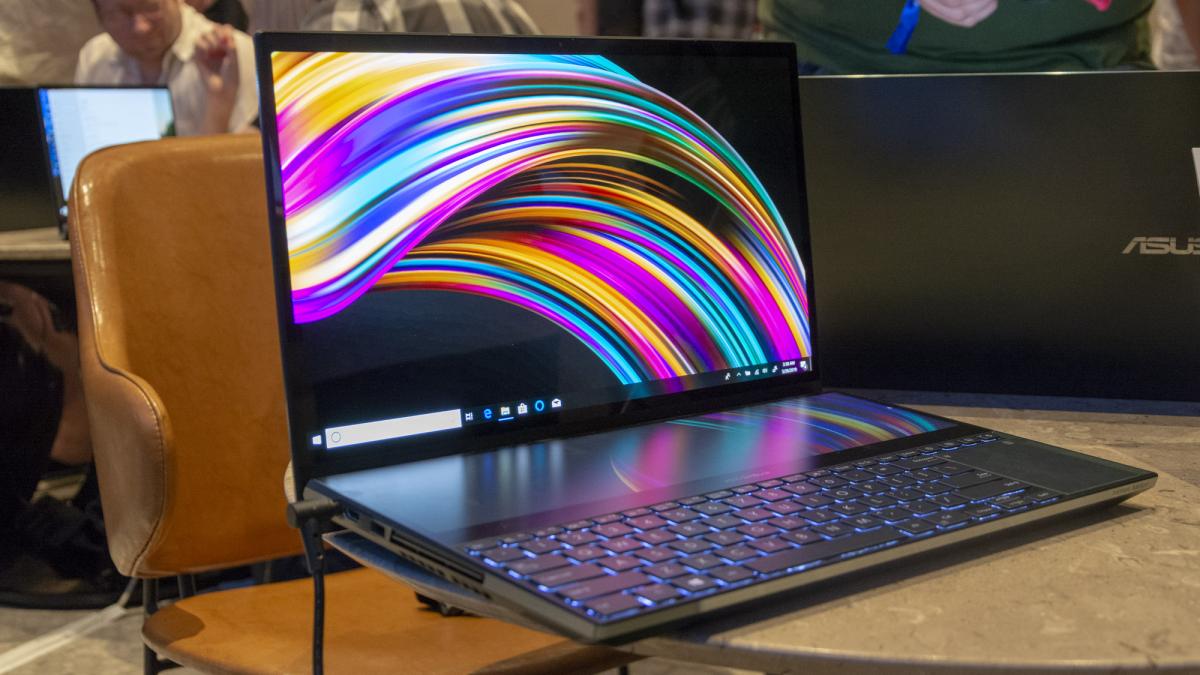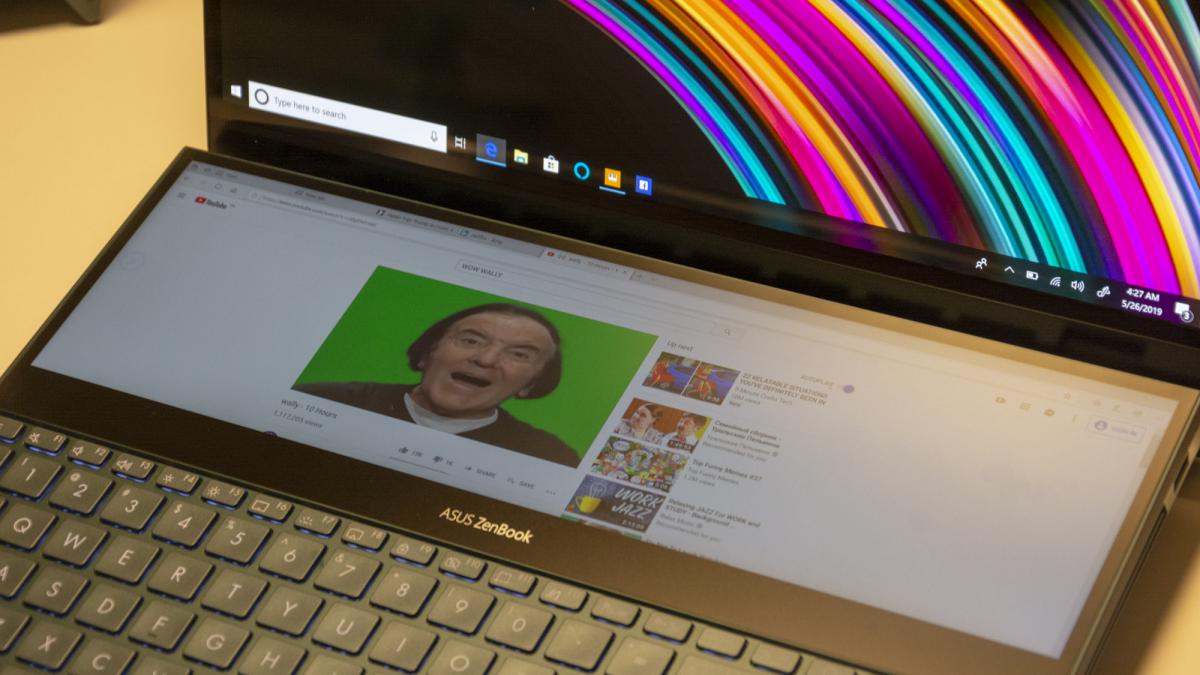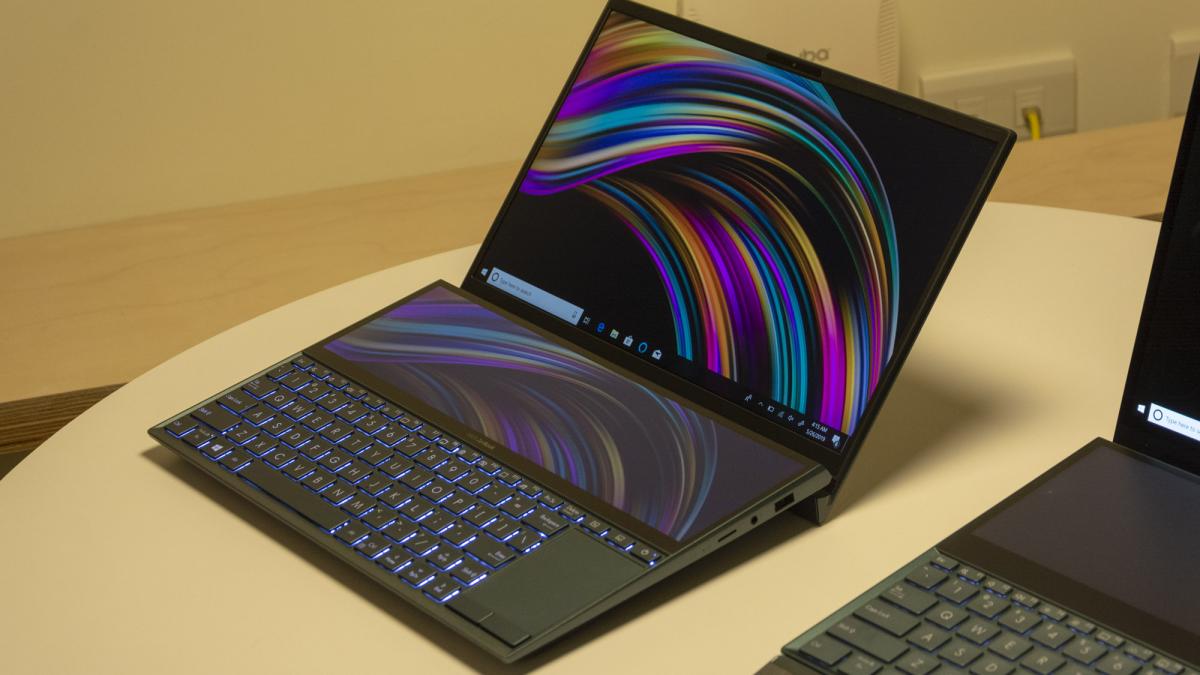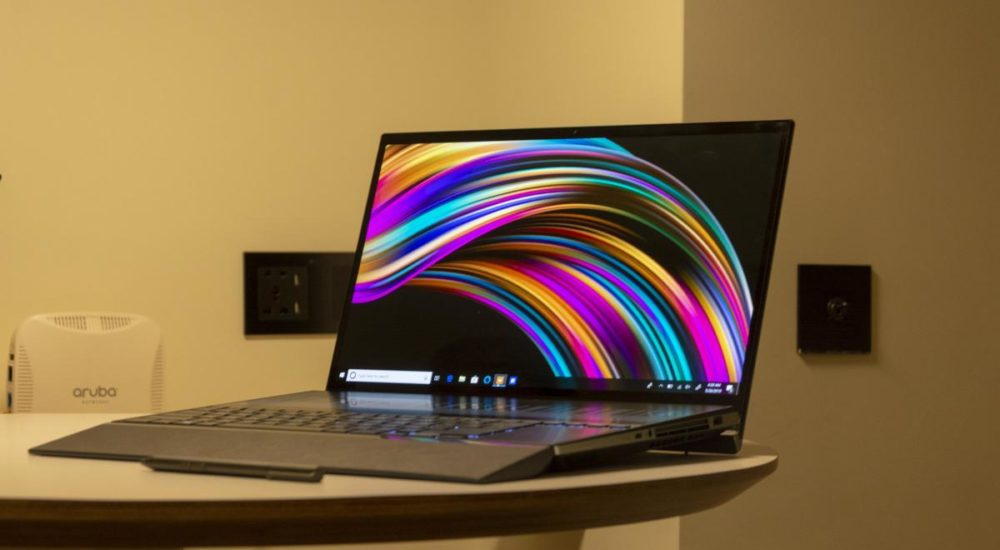The dual-screen ZenBook Pro Duo is certainly different, but is it practical? Here’s the lowdown from Computex 2019
There are plenty of laptop manufacturers exhibiting at Computex 2019 in Taipei right now, and it’s hard to say what’s the best laptop of the show. But when it comes to the most unusual, the award may well go to Asus for its dual-touchscreen ZenBook Pro Duo.
This isn’t the first time Asus has pushed the boat out with an unconventional laptop design – the Asus ROG Mothership GZ700 is another recent example – but its experiments can sometimes lack practicality. Not so the newly unveiled ZenBook Pro Duo, which has the potential to genuinely take laptop multitasking to new heights.
Here’s all the details currently known about Asus’ innovative new laptop, plus my first impressions after testing it out.
Asus ZenBook Pro Duo review: Key specifications, price and release date
- 15.6in 3,840 x 2,160 (4K) OLED touch display
- 14in 3,840 x 1,100 ScreenPad Plus
- Up to Intel Core i9 CPU
- Up to Nvidia GeForce RTX 2060 GPU
- 2.4Gbits/sec Wi-Fi 6
- UK price: TBC
- UK release: TBC
Asus ZenBook Pro Duo review: Design, key features and first impressions
It may bear the ZenBook Pro name, but the Duo isn’t a mere upgrade to the familiar formula – it’s a complete redesign. Expanding on the idea of the ScreenPad touchpad (first seen in the ZenBook Pro 14), Asus has come up with the ScreenPad Plus, a full-width. half-height 14in secondary touch display that sits above the keyboard and works in tandem with the primary 15.6in 4K touchscreen.

This may sound like a gimmick, but it has a plethora of practical uses. It can display up to three applications at once, splitting them into thirds across its width, or it can serve as an extension of the primary display, adding an additional 50% to viewing space. It also functions as a touch-enabled control panel for video, photo or music editing apps, or as a drawing and designing surface. And since the 14in ScreenPad Plus has the same pixel density as the primary OLED display, there’s no loss in quality when moving content between screens.

Asus suggests some other possible scenarios too. A Twitch streamer could play a game on the main display while the ScreenPad Plus displayed a sidy-by-side of their live camera feed and their Twitch channel chat. Or, a holiday planner could view their trip schedule, see weather forecasts and play around with Google Maps on the ScreenPad Plus, while actually booking the holiday through the primary display. It may seem niche at first, but the second screen could be of benefit to just about anyone.

I’ve just one gripe about the ScreenPad Plus: at present there’s no way to manually alter the display brightness. It stays constantly at the same fixed level, even when you adjust the brightness of the primary display. That’s an issue that I hope to see resolved by the time of release.
The addition of the ScreenPad Plus also means that the keyboard has been shunted forwards to the front of the base, while the touchpad has been relocated to the right of the keyboard. Cleverly, the touchpad also doubles up as a digital numeric keypad, which is activated by holding down a sensor in the top-right corner. We’ve seen a similar arrangement before on the Asus ROG Zephyrus S GX701 and to be honest it wasn’t all that comfortable for typing on; thankfully, Asus has taken customer feedback into account on that one, and a palm rest attachment is available for the ZenBook Pro Duo.

While the ZenBook Pro Duo is far from a clone of its predecessor, the aluminum chassis is still recognisably a ZenBook, with that classic metal spun finish. It comes in just one colour that Asus is calling “the new black” – it’s “a little bit green, but very dark”.
One thing you can’t tell from my photos is that the ZenBook Pro Duo is much heavier than you’d expect, and the second display adds some thickness to the laptop too. Still, this space enables Asus to equip the ZenBook Pro Duo with hefty exhaust vents.

It also affords a decent amount of connectivity. On the left edge there’s a proprietary power port, a full-sized HDMI connector and a USB Type-A slot. Over on the right is another USB Type-A slot, a 3.5mm audio jack and a USB Type-C slot with 40Gbits/sec Thunderbolt 3. Dual Harman Kardon speakers handle audio, with four mics on board, and Asus has confirmed that the ZenBook Pro Duo will have next-gen 2.4Gbits/sec Wi-Fi 6. All in all, it’s looking like a seriously formidable premium notebook.

Although I’ve focused on the flagship 15.6in ZenBook Pro Duo, there’s also a smaller, lower-spec model with a 14in Full HD primary display and a 12.6in ScreenPad Plus. The larger ZenBook Pro Duo is available in specifications up to an Intel Core i9 CPU and a Nvidia GeForce RTX 2060 for gaming; the smaller version can be configured with up to an Intel Core i7 CPU and a Nvidia GeForce MX250 GPU.
Asus ZenBook Pro Duo review: Early verdict

Asus is on home turf here at Computex 2019 – the company is headquartered in Taipei – and it’s come out fighting with a slew of hardware announcements. Of all its new tech, however, the ZenBook Pro Duo is the product I’m most excited about. Unlike the standard ScreenPad, which I find fiddly and impractical (and I’m certainly not the only one), the ScreenPad Plus looks really useful, not just for content creators but for the average consumer too, and has the potential to shake up the whole premium laptop market.
Specification details are thin on the ground right now, but I’ll be updating this hands-on as soon as I know more. As for pricing and UK availability, I could only guess, so I won’t. Watch this space for more information on the ZenBook Pro Duo and, eventually, a full review.
Source: expertreviews.co.uk




































